Our work
Article
|Published
ULTRHAS aims to determine the impact of Ultrafine Particles (UFPs) from different transport mode emissions on human exposure and health and clarify the importance of physicochemical characteristics and atmospheric processes applying cutting-edge exhaust generation and exposure approaches.
The objective
The overall objective is to improve risk assessment of air pollutants and to advice policy makers and regulators on more targeted mitigation measures against the emission components and sources that contribute the most to adverse effects. This will allow for development of more efficient strategies to improve urban air quality and promote health and wellbeing.
The concept
The concept of ULTRHAS is to test a broad range of transport mode emissions (both exhaust and non-exhaust) under highly controlled laboratory conditions and provide detailed analysis of the physical and chemical characteristics and biological effects, through source campaigns that will constitute the main part of the project (WPs 2-5). We will perform a hazard ranking of transport mode emissions, and through advanced bioinformatics make predictions on how physical and chemical emission characteristics influence biological effects, and then test these predictions by investigating model UFPs with varying characteristics (WP6). The ULTRHAS toxicity testing strategy is based on a novel battery of advanced cell models and exposure systems to assess multi-tissue effects (WPs 3, 4 and 6), hitherto not yet applied in a similar scale in inhalation toxicity testing.
This figure shows the main concept of the interdisciplinary ULTRHAS project at a glance:

WP interaction in ULTRHAS.
WP1: Project management
The aim of WP1 is to manage the project in a fair and transparent manner, ensuring that the project’s deliverables are realized on schedule, within budget, in accordance with the original project proposal and within ethical and legal requirements. Furthermore, WP1 will enable integration of work packages and ensure effective communication between members of the research consortium to maximise the results.
WP leader | Partner institution |
Johan Øvrevik | Norwegian Institute of Public Health (NIPH) |
WP2: UFP generation and test campaigns
WP2 consists of three major areas of activity. These are 1) the development, validation and alignment of methods for UFP generation and characterisation, 2) the execution of test campaigns for the different transport modes, and 3) studies with model aerosols to test hypotheses and Trojan horse effect. A central task of WP2 is to performe a comprehensive physical and chemical characterization of the aerosols applied in the in-vitro (WP3/WP4/WP6) and in-vivo (WP5), including the impact of atmospheric ageing.
WP leader | Partner institution |
Ralf Zimmermann | Universitaet Rostock (UROS) |
WP3: Toxicity screening of different transport modes in ALI lung models
WP3 aims to evaluate the cytotoxic, pro-inflammatory, genotoxic and mutagenic potential of different transport mode emissions in advanced and relevant mammalian lung tissue models exposed at Air-Liquid Interface (ALI). The WP specific objectives are: 1) determine the biological effects of UFPs from different transport modes and the importance of their physical properties (i.e. size, surface area, PNC) versus chemical composition, 2) distinguish effects of particle and gaseous phases, 3) unravel the toxicological effects of atmospheric aging on emission aerosols, and 4) compare in vitro and in vivo effects.
WP leader | Partner institution |
Sebastiano Di Bucchianico | Helmholtz Zentrum Muenchen Deutsches Forschungszentrum fuer Gesundheit und Umwelt GMBH (HMGU) |
WP4: Effects in advanced tissue models of human secondary organs
In WP4 we will identify potential adverse effect beyond the lung, in relevant multiple secondary tissue models, and selected transport emission sources will be tested for lung-mediated indirect effects, including 3D liver microspheres, human inducible pluripotent stem cell (hiPSC) based brain models, human intestinal and bladder epithelial tissues, and primary human lymphocytes. To mimic real-life exposure scenarios, the secondary organ tissue models will either be grown in the chamber below the 3D lung tissues used in WP3 or exposed to conditioned medium from primary exposures of the 3D lung tissues in ALI. As in WP3, the main focus will be on KE relevant for the inflammatory and carcinogenic AO. Methods and readouts investigated in WP4 will be harmonized with WP3.
WP leader | Partner institution |
Barbara Rothen | Université de Fribourg (UNIFR) |
WP5: In vivo validation of biological effects
The main purpose of WP5 is to validate the in vitro biological effects by in vivo animal exposures to selected transport mode emissions, and to assess sex-differences in responses.
WP leader | Partner institution |
Pasi Javala | University of Eastern Finland (UEF) |
WP6: Data integration, analysis and testing – The “Trojan Horse” effect and impact of emission characteristics on toxicity
WP6 will determine if and how variability in biological effects of different transport mode emissions is affected by physicochemical characteristics, including size, chemical composition and morphology, by analysing the data obtained through WP2-5, to identify the potential key drivers of adverse effects. Furthermore, we will test these predictions by use of model aerosols, and examine the combined effects of the various components of exhaust gases and deliver facts about the "Trojan Horse" effects.
WP leader | Partner institution |
Johan Øvrevik | Norwegian Institute of Public Health (NIPH) |
WP7: Health impact assessment, strategy and policy
WP7 will create a framework for comparative health risk characterization for UFPs from various transportation sources by using knowledge from in vitro toxicological data. Specifically, WP7 will contribute to the following: 1) Bridge in vitro toxicology to human risk characterisation by using the intake-DALY method. 2) Describe aerosol size dependent factors in population exposure and uptake of traffic UFPs. 3) Estimate human health impacts of UFPs of different composition. 4) Develop policy recommendations for using the most health relevant exposure metric and controlling most harmful UFPs.
WP leader | Partner institution |
Otto Hänninen | Terveyden Ja Hyvinvoinnin Laitos (THL) |
WP8: Communication, dissemination and exploitation
The objectives of WP 8 are to 1) developing and implementing a communication, dissemination and exploitation strategy of the results, 2) establishing a plan to communicate the project’s results to various stakeholders including academic, political, industrial, and societal audiences, 3) exploiting the project knowledge and results, and 4) coordinating training activities.
WP leader | Partner institution |
Thomas Adam | Universitaet der Bundeswehr Muenchen (UniBw M) |
WP9: Ethics requirements
WP 9 sets out the 'ethics requirements' that the project must comply with. The relevant ethics requirement for ULTRHAS is Human Requirement No. 1 and the procedures and criteria used to identify/recruit research participants.
WP leader | Partner institution |
Johan Øvrevik | Norwegian Institute of Public Health (NIPH) |



